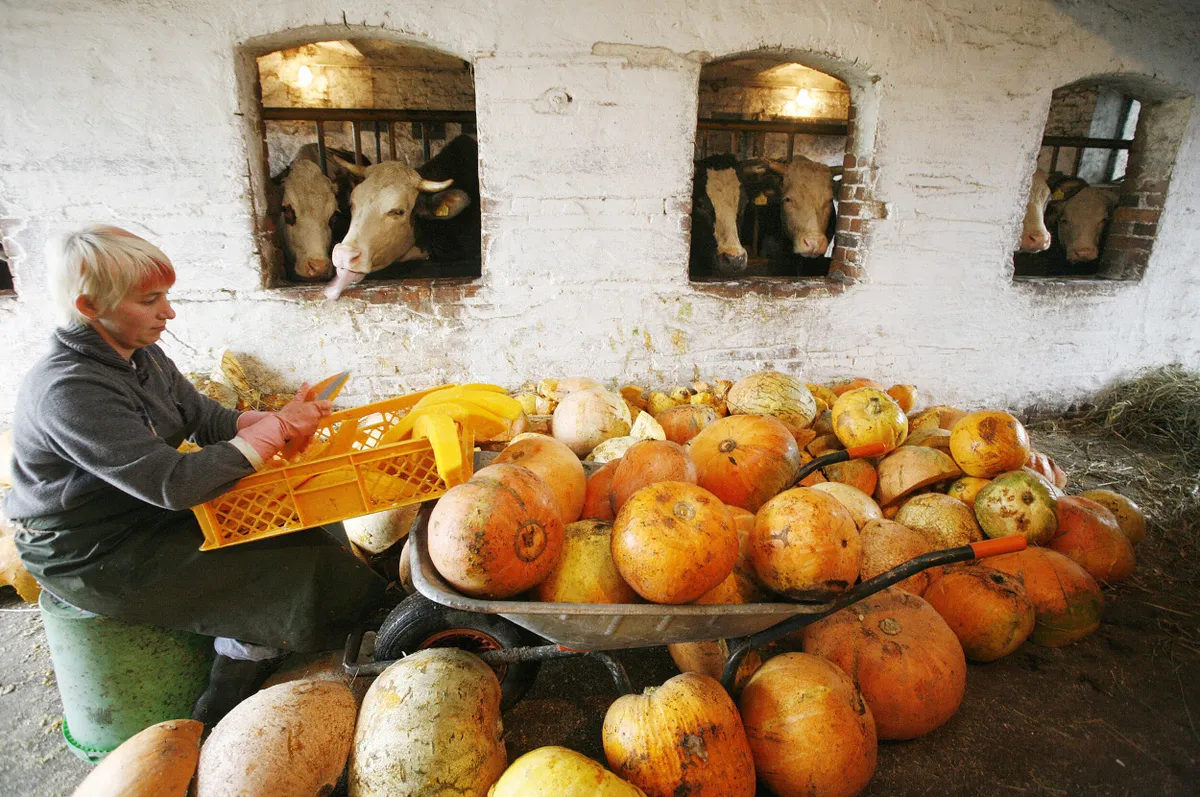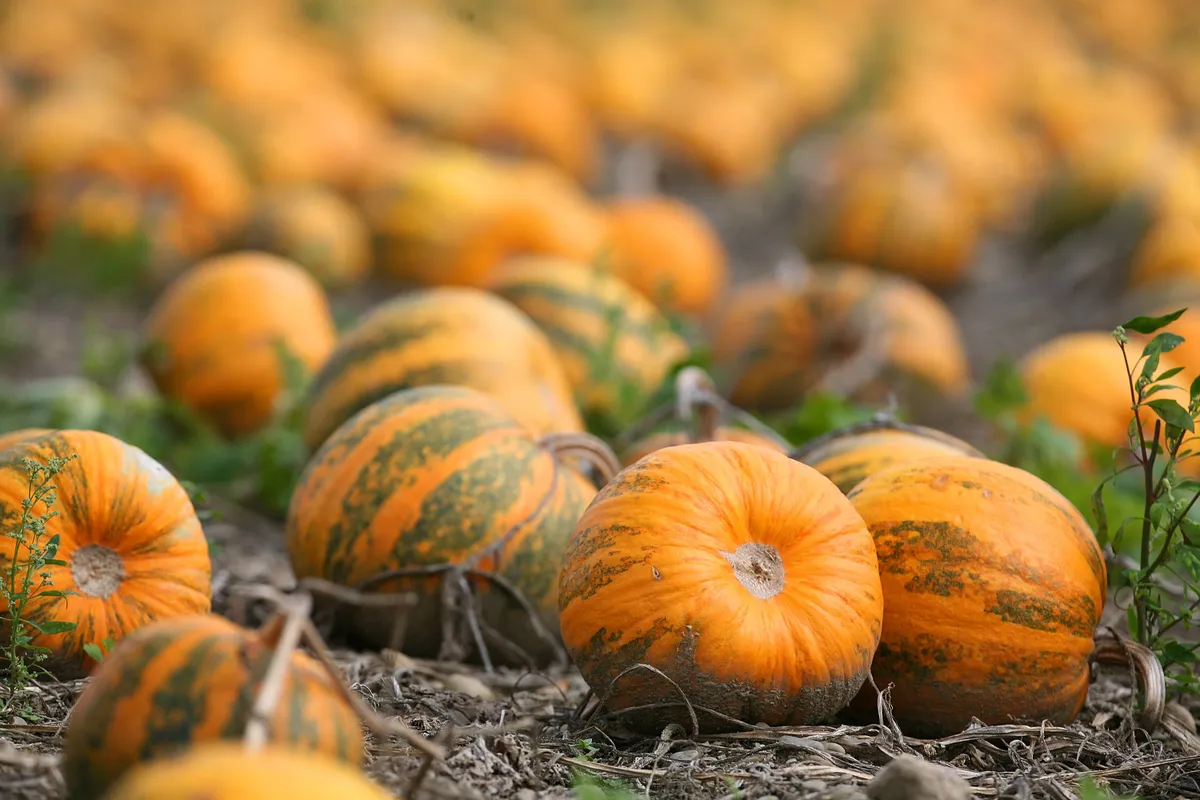With its rutted drive, muddy pastures and the intermittent pong of pig manure, the mill at Herbersdorf Graschuh, in the southern Austrian state of Styria, is hardly the kind of place at which you would expect to encounter an ‘oil sheik’. But that is the affectionate nickname the grateful citizens of this tiny rural community have given Gernot Becwar in recognition of the vital role he has played in resuscitating their once-dilapidated pumpkin seed oil mill.
More on pumpkins
“The people told me: ‘You are the mayor of the town. You must help us. You must buy the oil mill,’ so I did exactly that,” recalls this uncannily youthful retired teacher with a smile. “Since then I have become fascinated in the history of pumpkins.” Gernot’s enthusiasm is evident in his entertaining and informative talks about the joys of pumpkin seed oil, held in the atmospheric medieval cellars of the oil mill. However, his research into the 300-year history of pumpkin seed oil has yet to solve the mystery of exactly why and when Styrian pumpkins developed the genetic variation that makes them particularly well suited to the oil’s production. For at some point in the past, Styrian pumpkins mutated so that their seeds were no longer wrapped in protective shells. “The literature stopped mentioning shells 100 years ago,” says Gernot. “Something happened, we just don’t know what.”

Pumpkin seed oil
As genetic mutations go, this proved a most fortuitous one for the country folk of Styria. Until the appearance of pumpkins with ‘naked’ seeds, they had to shell every single one by hand. And with a 2.5kg sack of seeds required to make one litre of oil, that didn’t leave a great deal of time for much else. These days, people don’t even have to gather the seed from the pumpkins manually, although the traditional method is still widely practised. An experienced pair of hands can split pumpkins at lightning speed, with what looks like an implement of medieval torture, and fill a bucket with seeds in less than an hour. For the less dexterous, ripe pumpkins are laid out in lines for spiking by a rumbling harvester that removes the seeds.

Sowing pumpkins for pumpkin seed oil takes place at the end of April, or early May, depending on the danger of late frosts. “When the ‘Ice Man’ comes in May we must plant the pumpkins a second time,” explains Gernot. The absorbent nature of the naked pumpkin seed prevents the use of herbicides, leaving the pumpkins to grow naturally, three to five per vine, among an unruly organic carpet of weeds and grasses. By late September the tawny shades of the vines and parched grasses echo the yellow of the ripe pumpkins. In a good year, one hectare can yield up to 10,000 fruits. Each pumpkin holds between 400 and 700 seeds, so the first stage of the oil-making process is to increase their longevity by toasting in a large wood-fired cauldron. The seeds are then either cooled and stored for up to two years – which allows Gernot’s oil mill to continue operating throughout the year – or are milled and mixed with water and a little salt to help release the oil from the seeds and the fat from the proteins. The resulting viscous paste is later reheated until the ausschläger (oil beater) judges from its sandy texture that it is ready for pressing.
The result is a delicious dark-green oil with tinges of red, a velvety texture and a nutty flavour, that trickles, still warm, into stainless-steel churns where it will cool before being bottled. Gernot produces his own-label oil, while the mill also enables many local small-scale pumpkin growers to make theirs, a popular move that accounts for his affectionate nickname. Some 30 mills in the state now produce more than 1.8 million bottles of pumpkin seed oil a year. Despite this volume, the oil’s culinary, nutritional and medicinal qualities are still largely unknown outside Austria. It is believed to be beneficial for diseases of the heart and circulatory system and even depression. Gernot is absolutely convinced of these benefits and cooks with his delicious ‘green gold’ whenever he gets the chance. If his vigorous disposition is anything to go by, he is not mistaken.
Further information
• Öhlmühle Herbersdorf, A-8510 Rassach, Herbersdorf 9, Stainz, Austria. www.oelmuehle.herbersdorf.at
Recipe for potato cream soup using pumpkin seed oil
Ingredients
- 1 onion and 1 leek, diced
- 250ml rosé wine
- 500g potatoes
- 250ml cream
- Knob of butter
- To taste
Marjoram, garlic, nutmeg 1 cup beef stock (optional) - Handful of roasted pumpkin seeds
Steps
- Brown onions and leek in butter, pour on wine, simmer and reduce to a thick consistency.
- Add cream, and beef stock if required.
- Season to taste.
- Boil diced potatoes until soft.
- Mash all together and serve with roasted pumpkin seeds.
- Drizzle with a few drops of Styrian pumpkin seed oil.
Recipe for Styrian salad dressing using pumpkin seed oil
- 60ml vinegar
- 30ml pumpkin seed oil
- 30ml water
- Pinch of sugar and salt
Mix all in a bottle and shake thoroughly.
The dressing is suitable for all kinds of salad. In Styria it is used when serving up dark broad beans and boiled beef. For other recipes go to www.pumpkinseedoil.cc